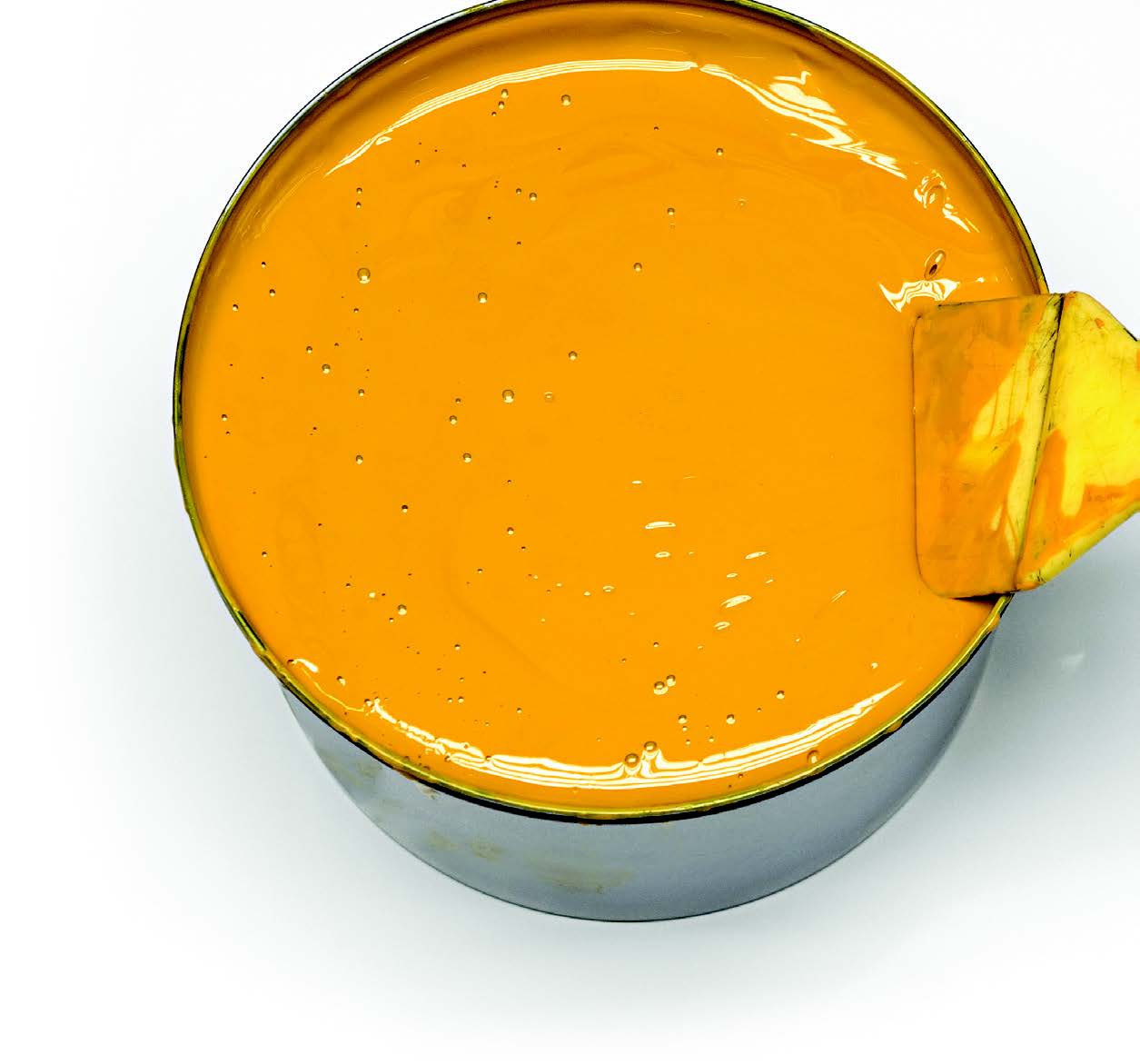Fluid flow
R. David Whitby | TLT Worldwide March 2017
Many lubrication problems require an exact knowledge of viscosity.

Printing ink is an example of a rheopectic fluid.
© Can Stock Photo / photology75
WHEN MANY LUBRICATION ENGINEERS THINK ABOUT FLUID FLOW, their first thoughts are likely to be about viscosity, whether kinematic viscosity, dynamic viscosity or both. The viscosity of a fluid can be defined most simply as its resistance to flow and is a measure of the friction between the liquid molecules when moving past each other.
The mechanism of flow in which adjacent layers of molecules in a fluid slide smoothly past each other without intermingling was described by Sir Isaac Newton as viscous flow. Newton’s Law of Viscous Flow first defined the relationship between the mechanical forces involved: “The internal friction (i.e., viscosity) of a fluid is constant with respect to the rate of shear.” The absolute viscosity of a fluid is shear stress divided by rate of shear.
Fluids that obey this law are called Newtonian fluids. However, it is now known that there are several types of fluids that do not obey this law; these are called non-Newtonian fluids. Newton’s law of viscosity is a constitutive equation and not a fundamental law of nature. It is an approximation that holds in some materials and fails in others.
Many problems in lubrication, particularly those concerned with the design of hydrodynamic bearings or the pumping of lubricants through pipes and hoses, require an exact knowledge of viscosity. This requires mathematical definitions of units of viscosity in fundamental physical terms.
Dynamic viscosity (also called absolute viscosity) is defined as the tangential force per unit area required to move one horizontal plane with respect to another horizontal plane at a unit velocity while maintaining a unit distance apart in the fluid whose viscosity is being measured. Dynamic viscosities are usually reported in poise (P), or more practically in centipoise (cP). 100 cP equals 1 P. In SI units, 10 P equals 1 pascal-second (Pa.s).
Kinematic viscosity is the ratio of dynamic viscosity to density, both measured at the same temperature and in consistent units. The most common units for reporting kinematic viscosities are either stokes (St), or more practically centistokes (cSt). 100 cSt equals 1 St. In SI units 1 cSt equals 1 millimeter squared per second (mm
2/s). Kinematic viscosities (in cSt) can be converted to dynamic viscosities (in cP) by multiplying by the density in gm/cm
3.
Many common fluids are Newtonian. These include gases, water, olive oil and mineral base oils. Many other fluids are non-Newtonian, in that their viscosity depends on the rate of shear to which they are subjected.
Thixotropic fluids are non-Newtonian fluids, which show a time-dependent decrease in viscosity. A number of gels or fluids that are viscous under static conditions will flow (become less viscous) when stressed, sheared, shaken or agitated. They then take time to return to the more viscous state. The times taken depend on the nature of the fluid. The longer the fluid is subjected to shear stress, the lower its viscosity. Some thixotropic fluids, such as ketchup and toothpaste, return to a gel state very quickly. Examples of thixotropic fluids include greases and many paints and inks. Lubricating oils that contain polymeric viscosity index-improving additives are often slightly thixotropic.
Rheopectic fluids also are non-Newtonian fluids but show a time-dependent increase in viscosity. When a rheopectic fluid is subject to a shearing force, its viscosity increases. The longer it is subject to a shearing force, the higher its viscosity. In some cases, a rheopectic fluid will stop flowing altogether if the shearing force is applied for long enough. Examples of rheopectic fluids include gypsum pastes, printing inks and synovial fluid.
Dilatant fluids are often confused with rheopectic fluids. Dilatant fluids do not show time-dependent increase in viscosity but force-dependent increase in viscosity. The most frequently used example of a rheopectic fluid is a mixture of cornstarch in water. If sufficient cornstarch is mixed with water to make a paste with the consistency of thick cream, if this is hit hard (with a hammer or clenched fist), it will become solid instantly. The mixture is a dilatant fluid.
I will leave a discussion of the effects of temperature and pressure on fluid viscosity for a later column.
 David Whitby is chief executive of Pathmaster Marketing Ltd. in Surrey, England. You can reach him at pathmaster.marketing@yahoo.co.uk
David Whitby is chief executive of Pathmaster Marketing Ltd. in Surrey, England. You can reach him at pathmaster.marketing@yahoo.co.uk.